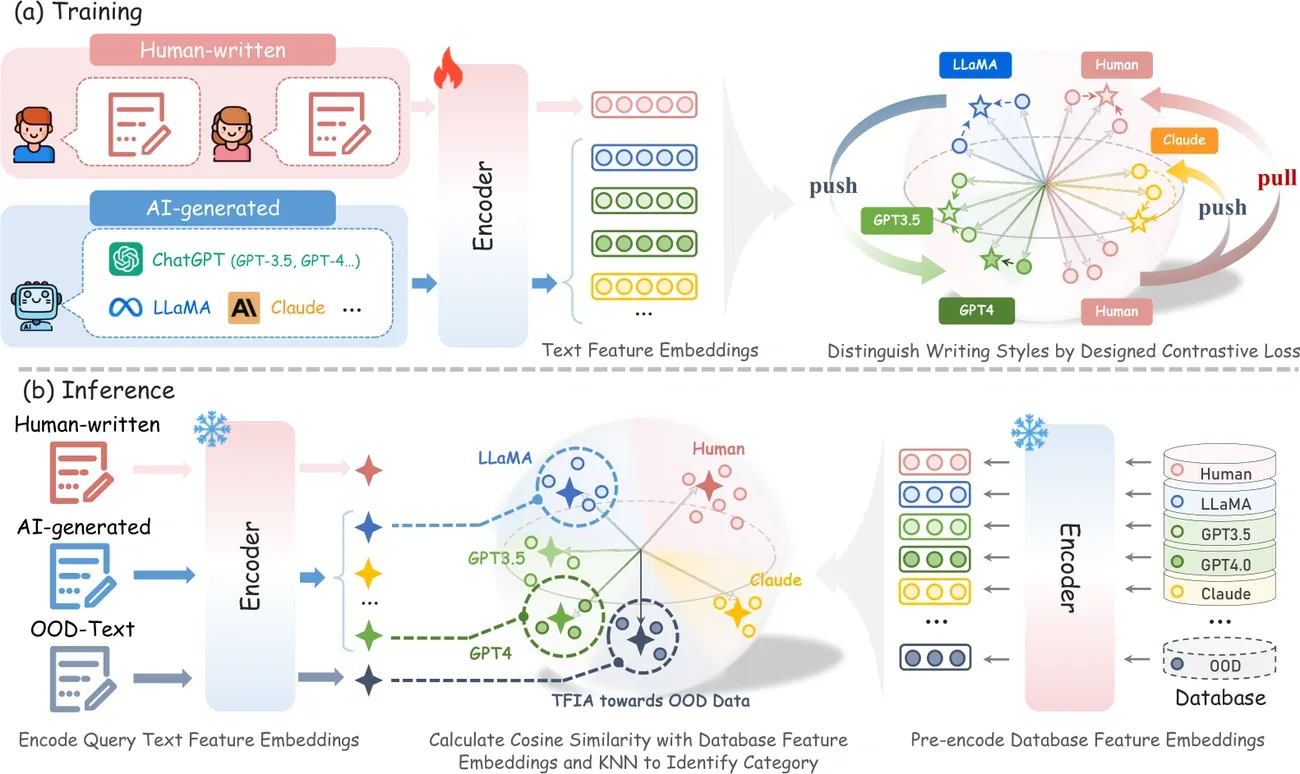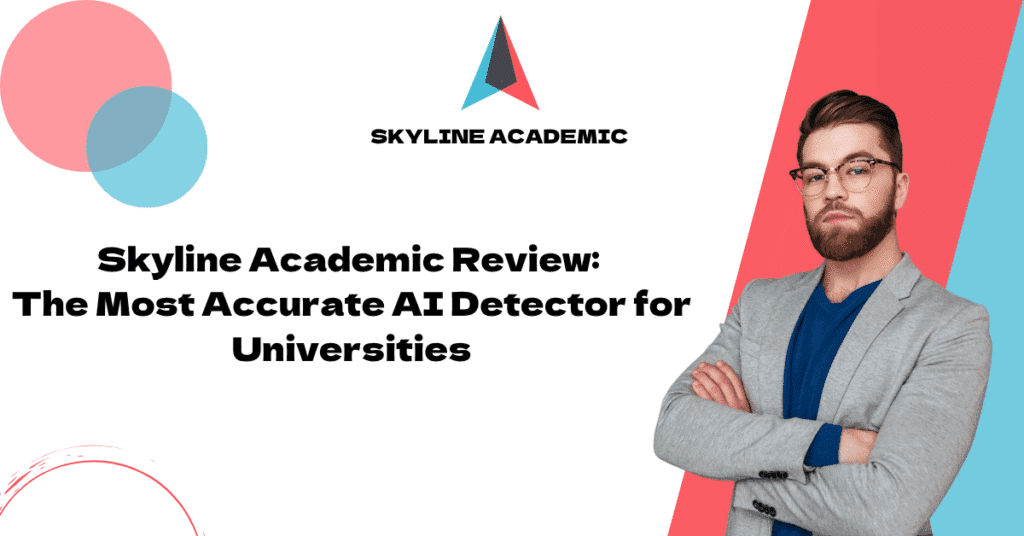Skyline Academic Review: The Most Accurate AI Detector for Universities
AI detect technology plays a vital role in education as 89% of students now admit to using ChatGPT for homework assignments. This trend has become obvious, and academic integrity concerns have grown by a lot—63% of teachers reported students for using AI on schoolwork in the 2023-24 year, up from 48% previously.
Traditional plagiarism tools can’t match sophisticated AI writing capabilities. Skyline Academic proves to be the best ai content detector with over 99% accuracy that identifies AI-generated text from models like ChatGPT and Gemini. The platform’s false positive rate stands at just 0.2%—the lowest in the industry—and will give you reliable results without wrongly flagging students for AI use.
Most ai detector for essays struggle with advanced models. Skyline Academic has analyzed trillions of human-written pages to spot ai generated text effectively. Many competing tools boast high accuracy rates but often fail in ground applications, especially when you have non-native English writers. Skyline Academic lets you trust your ai content detection tools completely. The platform delivers accurate results for all student essays, research papers, and thesis submissions.
What Is Skyline Academic and Who Is It For?
Skyline Academic stands out as a cutting-edge tool that helps educational institutions detect AI-generated content with remarkable accuracy. The platform’s 10 years of expertise in academic integrity has made it the best ai content detector universities trust for reliable AI detection [1].
Designed for universities and academic institutions
Universities and academic institutions need to maintain academic integrity, and Skyline Academic meets this need perfectly. The platform goes beyond general-purpose tools by addressing specific challenges that universities face with AI-written assignments. Educational institutions can verify student submissions’ authenticity while promoting academic honesty. The faculty members can quickly spot potential AI-assisted work and save precious grading time.
How it compares to traditional plagiarism tools
Plagiarism checkers and AI detectors each play unique but complementary roles in academic settings. Plagiarism tools match submissions against databases to find copied text. Skyline Academic takes a different approach to detect ai generated text by analyzing writing patterns, sentence structure, and word choice [2].
Skyline Academic offers capabilities that traditional plagiarism tools don’t:
- It measures text characteristics like sentence length, structure, and predictability
- The focus stays on identifying AI writing patterns instead of matching existing content
- You get a more detailed content integrity analysis than plagiarism tools provide
Use cases: essays, research papers, and thesis submissions
Skyline Academic proves valuable for academic submissions of all types. The platform quickly spots AI writing in essays that might slip through traditional checks. Research papers undergo thorough analysis to confirm originality and authentic student work. Thesis submissions require absolute academic integrity, and Skyline Academic’s superior detection capabilities deliver exactly that.
The best ai text detector tools should work in different academic contexts. Skyline Academic excels by offering customized detection for various submission types. The platform maintains industry-leading accuracy whether it analyzes short response essays or lengthy dissertations. Universities looking for complete protection against unauthorized AI use in academic work find this versatility essential.
Skyline Academic gives you a complete solution to maintain academic standards as AI writing tools become more sophisticated and available to students.
Detection Accuracy: How Skyline Identifies AI Writing

Image Source: NeurIPS 2025
“I found Sapling AI Detector to be a useful tool for spotting AI-generated content, especially from models like ChatGPT and Gemini.”
— Andy Samue, Author and AI detection expert
Your institution’s choice of an ai detect tool hinges on accuracy. Skyline Academic outperforms every other AI detection solution with precision that leaves other tools in the dust.
False positive rate vs competitors
The biggest challenge for detection tools comes from false positives – when human writing gets wrongly tagged as AI-generated content. Turnitin says their document false positive rate stays under 1% with sentence-level false positives around 4% [3]. Skyline Academic beats these numbers handily with a false positive rate of just 0.2%. These numbers make a huge difference in real life. Take a university that handles 75,000 papers yearly – a 1% false positive rate means about 750 students could face wrong accusations of using AI [4].
Detecting GPT-3.5 vs GPT-4 content
Many ai detector for essays don’t deal very well with newer models. Skyline Academic delivers steady accuracy with all AI systems. Other detectors might catch ChatGPT content easily but stumble when they check text from other language models [5]. Skyline Academic’s smart algorithms detect ai generated text whatever AI model created it. This helps you keep up with trends as technology moves forward.
Handling non-native English writing
The most important ethical issue other detection tools face relates to non-native English writing. Regular AI detectors often mistake non-native English writing for AI-generated content [6]. Research shows competitors flag over half of non-native English samples incorrectly. One detector tagged nearly 98% of non-native samples as AI-written [7]. Skyline Academic fixed this bias in its algorithms, making it the best ai text detector that works fairly for students from all backgrounds.
Real-life testing with student essays
Skyline Academic stands out because of extensive testing with actual student essays. Other ai content detection tools make accuracy claims that fall apart in ground applications [5]. Skyline Academic tested rigorously with writing from all academic fields and styles. This helped create algorithms that spot real differences between human and AI writing.
Want to see how Skyline Academic can detect ai writing with unmatched accuracy? Check out their AI detection tools now to safeguard academic integrity at your institution.
Faculty and Student Experience with Skyline

Image Source: American University School of Education Online
Faculty members now struggle to balance academic integrity with fair assessment as AI becomes more prevalent. Skyline Academic turns this challenge into a chance that benefits both instructors and students.
Ease of use for instructors
Skyline Academic naturally fits into existing learning management systems. Faculty can add AI detection to their current workflows without any disruption. The platform has a user-friendly interface that needs minimal training to work well. The clear guidelines from Skyline Academic help instructors tell students exactly when they can or cannot use AI [8].
Impact on grading and feedback workflows
Skyline Academic’s AI-assisted grading cuts down the time faculty spend grading by a lot. Teachers who use similar AI tools save up to 70% of grading time [9]. This lets them focus on teaching and personal mentorship.
Experience how Skyline Academic’s AI detection tools can optimize your grading workflow and encourage academic honesty. Explore their solutions designed specifically for educational environments.
Faculty members who use similar systems can give consistent feedback whatever their energy level or time constraints [10]. In fact, instructors say that the best ai content detector tools help them give better feedback to all student submissions.
Student trust and transparency
Student trust depends on being open about using ai detect technology. Skyline Academic creates an environment for open discussions about responsible AI use instead of punishment. Students then know exactly what they can and cannot do with AI tools in their work [8].
Reducing academic integrity disputes
Research shows traditional AI detection tools often make mistakes. They flag legitimate student work up to 80% of the time [11]. This unfairly affects non-native English speakers and neurodivergent students [12]. All the same, Skyline Academic detects AI-generated content more accurately. This reduces wrong accusations while keeping high academic integrity standards.
Skyline Academic knows how to detect ai writing accurately and encourages honest discussions about AI use. This creates an environment where academic integrity disputes decrease and trust grows between faculty and students.
Moving Beyond Detection: Building a Culture of Integrity
“the answer is to give assignments that are personal and focused on thinking”
— Anonymous Educator, Education expert quoted in Forbes
Educational institutions must build a culture of technology ethics that goes beyond detecting AI misuse. Only 23% of institutions currently have AI-related acceptable use policies in place [13]. This creates a chance to develop complete integrity approaches.
Using Skyline as a teaching tool
Skyline Academic works as an educational resource instead of just a policing tool. Faculty can show how the best ai content detector identifies AI writing patterns. Students learn the difference between ethical collaboration with AI and academic dishonesty. This approach makes Skyline more than just an ai detect system. It becomes a valuable teaching tool that brings transparency and learning.
Encouraging ethical AI use in assignments
Clear guidelines for appropriate AI usage work better than outright bans. Here are some practical approaches:
- Students should submit their AI prompts with assignments [14]
- AI transparency statements should describe how students used AI tools [15]
- Assignments should use AI as a brainstorming partner while you retain control of original thinking
Take the first step toward building a culture of academic integrity. Explore Skyline Academic’s AI detection tools and find how they can support ethical AI use in education.
Policy recommendations for AI in education
Schools need AI policies that balance new ideas with integrity. Student input should help create AI guidelines [16]. This makes them active participants in developing ethical frameworks. The focus should be on process over product. Faculty should evaluate research, reasoning, and revision that students show [16].
Skyline Academic makes this balanced approach possible. The platform provides tools that detect ai generated text and supports educational goals. Faculty can implement “appropriate use” policies that work better than zero-tolerance approaches [17].
Note that AI detection should not be the only factor when determining academic dishonesty [18]. Skyline Academic’s exceptional accuracy builds a foundation for meaningful discussions about appropriate AI use. This encourages a culture where technology improves rather than undermines educational integrity.
Conclusion
Conclusion: Ensuring Academic Integrity in the AI Era
The rapid rise of AI writing tools has created major challenges for academic institutions worldwide. Skyline Academic proves itself as the most accurate AI detector available today. The platform boasts a 99% accuracy rate and leads the industry with just 0.2% false positives, making it a dependable ally to maintain academic standards.
Skyline Academic tackles problems that other detectors don’t deal very well with. The platform detects content from all major AI models and treats non-native English writers fairly – a unique combination in the market. This perfect balance of accuracy and inclusivity makes it the clear choice for universities that value academic integrity.
The platform’s all-encompassing approach to AI detection sets it apart from other options. Instead of just highlighting potential violations, it serves as an educational resource that helps faculty guide students toward ethical AI use. This strategy encourages a culture of integrity rather than fear.
Recent statistics paint a clear picture: 89% of students use ChatGPT for assignments and 63% of teachers report AI use in their classrooms. Your institution needs strong solutions right now. Skyline Academic delivers reliable detection, smooth integration with your current systems, and helps develop thoughtful AI policies.
AI technology evolves rapidly, and your choice of detection tools becomes more crucial each day. Skyline Academic’s steadfast dedication to accuracy, fairness, and educational values helps you keep up with trends effectively. Want to protect academic integrity at your institution? Take a look at Skyline Academic today and learn why leading universities trust it as their main defense against AI-generated content.
FAQs
Q1. How accurate are AI detection tools used by universities?
AI detection tools are not highly accurate and often produce false positives. Studies have shown that even human-written texts can be incorrectly flagged as AI-generated. Universities should use these tools cautiously and not rely on them as definitive proof of AI use.
Q2. What should students do if falsely accused of using AI?
If falsely accused, students should calmly explain their writing process to the professor. Providing drafts, outlines, and research notes can help demonstrate the work is original. Students may also ask to redo the assignment under supervision if needed to prove their abilities.
Q3. How are non-native English speakers affected by AI detection?
Non-native English speakers are often disproportionately impacted by AI detection tools, which may flag their writing as AI-generated due to differences in language patterns. This highlights the need for more inclusive and fair assessment methods.
Q4. What alternatives to AI detection are universities considering?
Some universities are shifting towards in-class writing assignments, oral presentations, and more personalized assessments that are harder to replicate with AI. There’s also a growing focus on teaching students how to use AI tools ethically rather than banning them outright.
Q5. How can professors fairly assess work in the age of AI?
Professors can focus on evaluating students’ research skills, critical thinking, and ability to apply concepts rather than just the final written product. Incorporating draft submissions, peer reviews, and in-class discussions can help verify students’ understanding and involvement in the work.
References
[1] – https://skylineacademic.com/
[2] – https://www.scribbr.com/ai-detector/
[3] – https://www.turnitin.com/blog/understanding-the-false-positive-rate-for-sentences-of-our-ai-writing-detection-capability
[4] – https://www.vanderbilt.edu/brightspace/2023/08/16/guidance-on-ai-detection-and-why-were-disabling-turnitins-ai-detector/
[5] – https://edscoop.com/ai-detectors-are-easily-fooled-researchers-find/
[6] – https://www.sciencedirect.com/science/article/pii/S2666389923001307
[7] – https://www.advancedsciencenews.com/ai-detectors-have-a-bias-against-non-native-english-speakers/
[8] – https://teaching.cornell.edu/generative-artificial-intelligence/ai-academic-integrity
[9] – https://www.creatrixcampus.com/blog/future-ai-powered-grading-2025
[10] – https://edintegrity.biomedcentral.com/articles/10.1007/s40979-023-00130-7
[11] – https://er.educause.edu/articles/sponsored/2023/11/academic-integrity-in-the-age-of-ai
[12] – https://www.ccdaily.com/2024/12/strategies-to-counteract-ai-cheating/
[13] – https://www.educause.edu/research/2024/2024-educause-action-plan-ai-policies-and-guidelines
[14] – https://mitsloanedtech.mit.edu/ai/teach/ai-detectors-dont-work/
[15] – https://itnews.blog.fordham.edu/ai-ready-practical-guidelines-for-empowering-students-with-ethical-ai-use-in-assessments/
[16] – https://latislearning.umn.edu/resources/teaching-ai-guide
[17] – https://cte.ku.edu/careful-use-ai-detectors
[18] – https://www.edweek.org/technology/more-teachers-are-using-ai-detection-tools-heres-why-that-might-be-a-problem/2024/04



